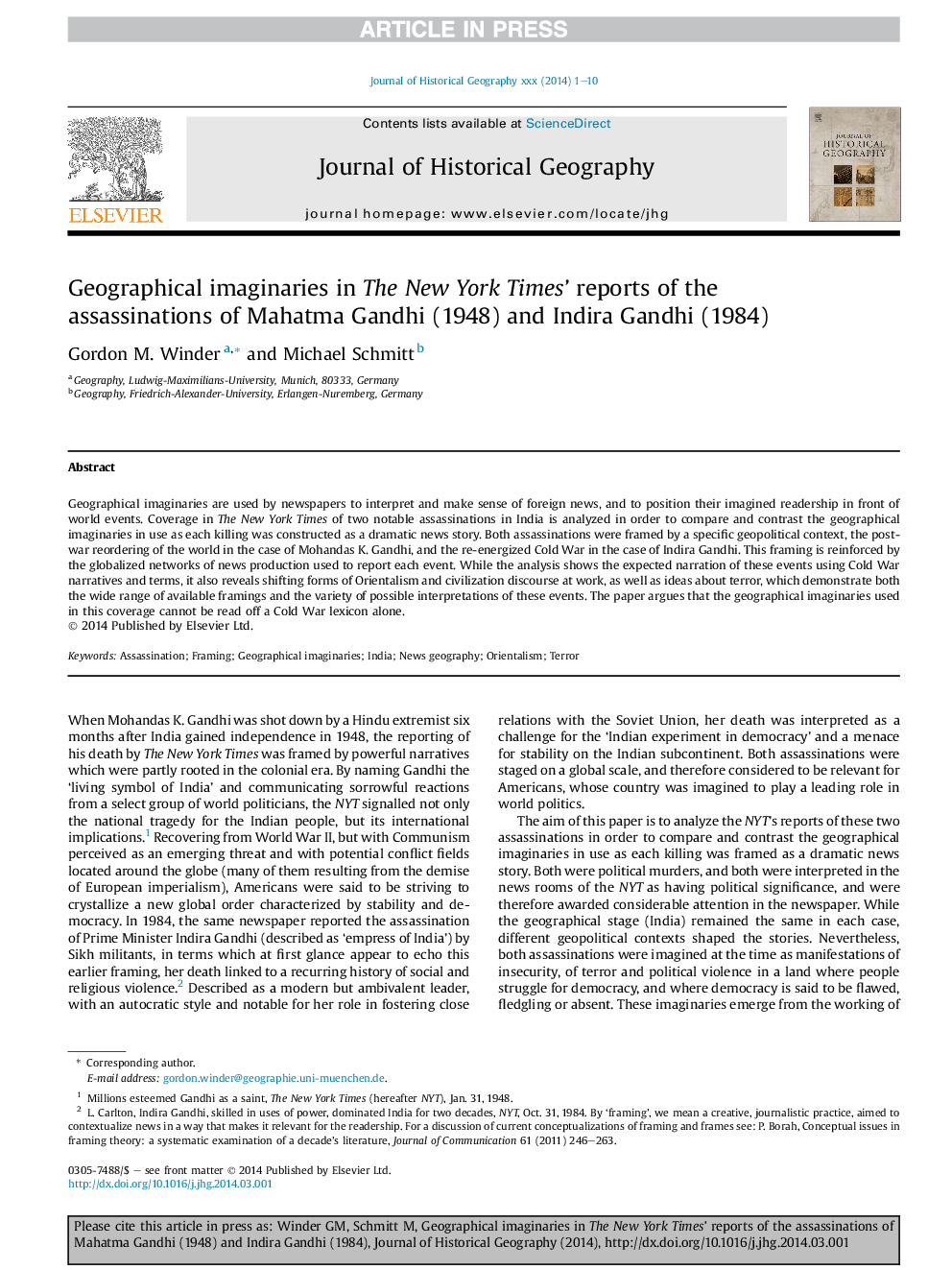| کد مقاله | کد نشریه | سال انتشار | مقاله انگلیسی | نسخه تمام متن |
|---|---|---|---|---|
| 7448046 | 1483980 | 2014 | 10 صفحه PDF | دانلود رایگان |
عنوان انگلیسی مقاله ISI
Geographical imaginaries in The New York Times' reports of the assassinations of Mahatma Gandhi (1948) and Indira Gandhi (1984)
ترجمه فارسی عنوان
تصورات جغرافیایی در گزارش های نیویورک تایمز از ترور ماهاتما گاندی (1948) و ایندیرا گاندی (1984)
دانلود مقاله + سفارش ترجمه
دانلود مقاله ISI انگلیسی
رایگان برای ایرانیان
کلمات کلیدی
ترور، کادر بندی، تفکرات جغرافیایی، هند، جغرافیا اخبار شرق شناسی، ترور،
موضوعات مرتبط
علوم انسانی و اجتماعی
علوم انسانی و هنر
تاریخ
چکیده انگلیسی
Geographical imaginaries are used by newspapers to interpret and make sense of foreign news, and to position their imagined readership in front of world events. Coverage in The New York Times of two notable assassinations in India is analyzed in order to compare and contrast the geographical imaginaries in use as each killing was constructed as a dramatic news story. Both assassinations were framed by a specific geopolitical context, the post-war reordering of the world in the case of Mohandas K. Gandhi, and the re-energized Cold War in the case of Indira Gandhi. This framing is reinforced by the globalized networks of news production used to report each event. While the analysis shows the expected narration of these events using Cold War narratives and terms, it also reveals shifting forms of Orientalism and civilization discourse at work, as well as ideas about terror, which demonstrate both the wide range of available framings and the variety of possible interpretations of these events. The paper argues that the geographical imaginaries used in this coverage cannot be read off a Cold War lexicon alone.
ناشر
Database: Elsevier - ScienceDirect (ساینس دایرکت)
Journal: Journal of Historical Geography - Volume 45, July 2014, Pages 106-115
Journal: Journal of Historical Geography - Volume 45, July 2014, Pages 106-115
نویسندگان
Gordon M. Winder, Michael Schmitt,
